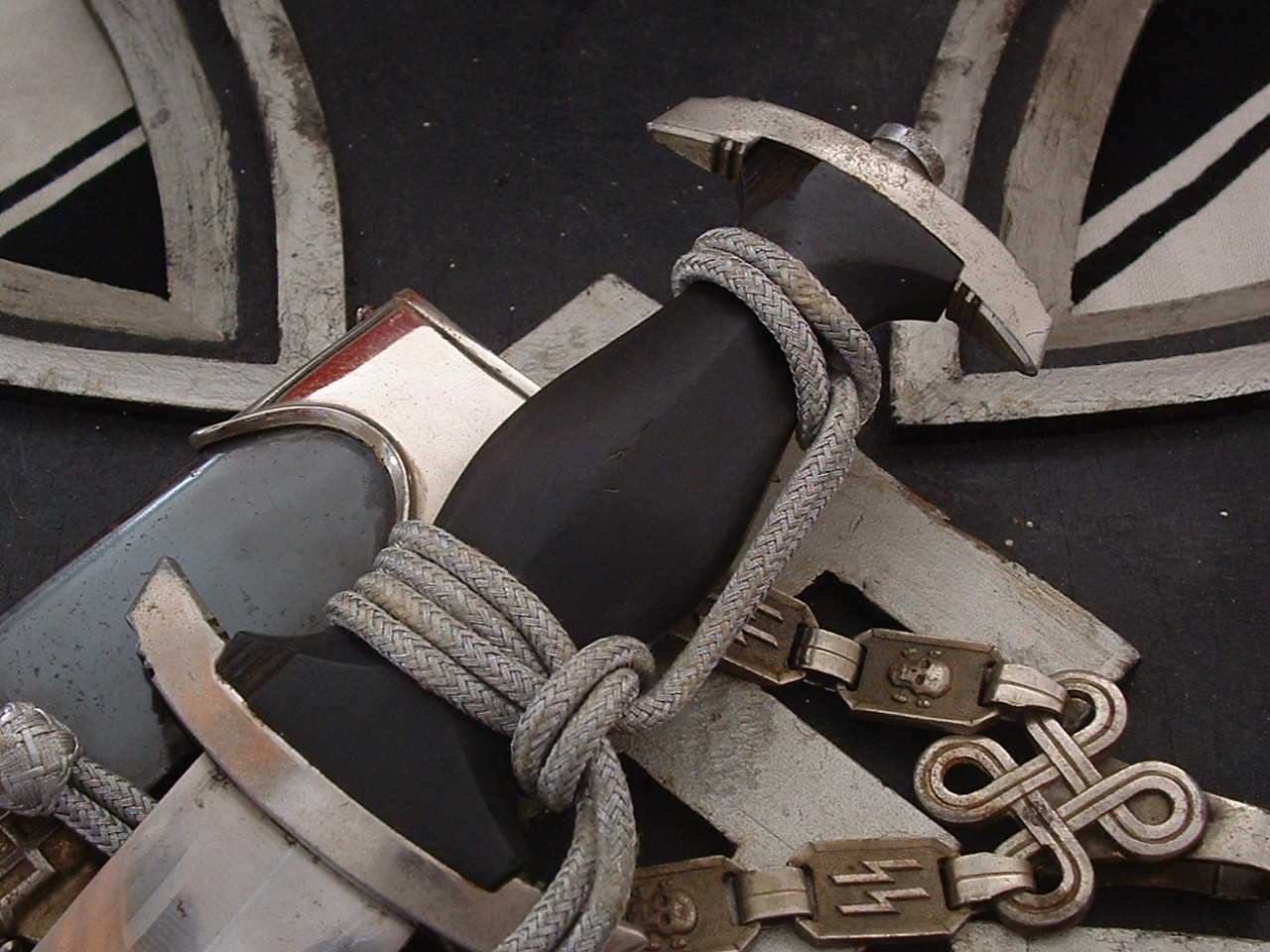
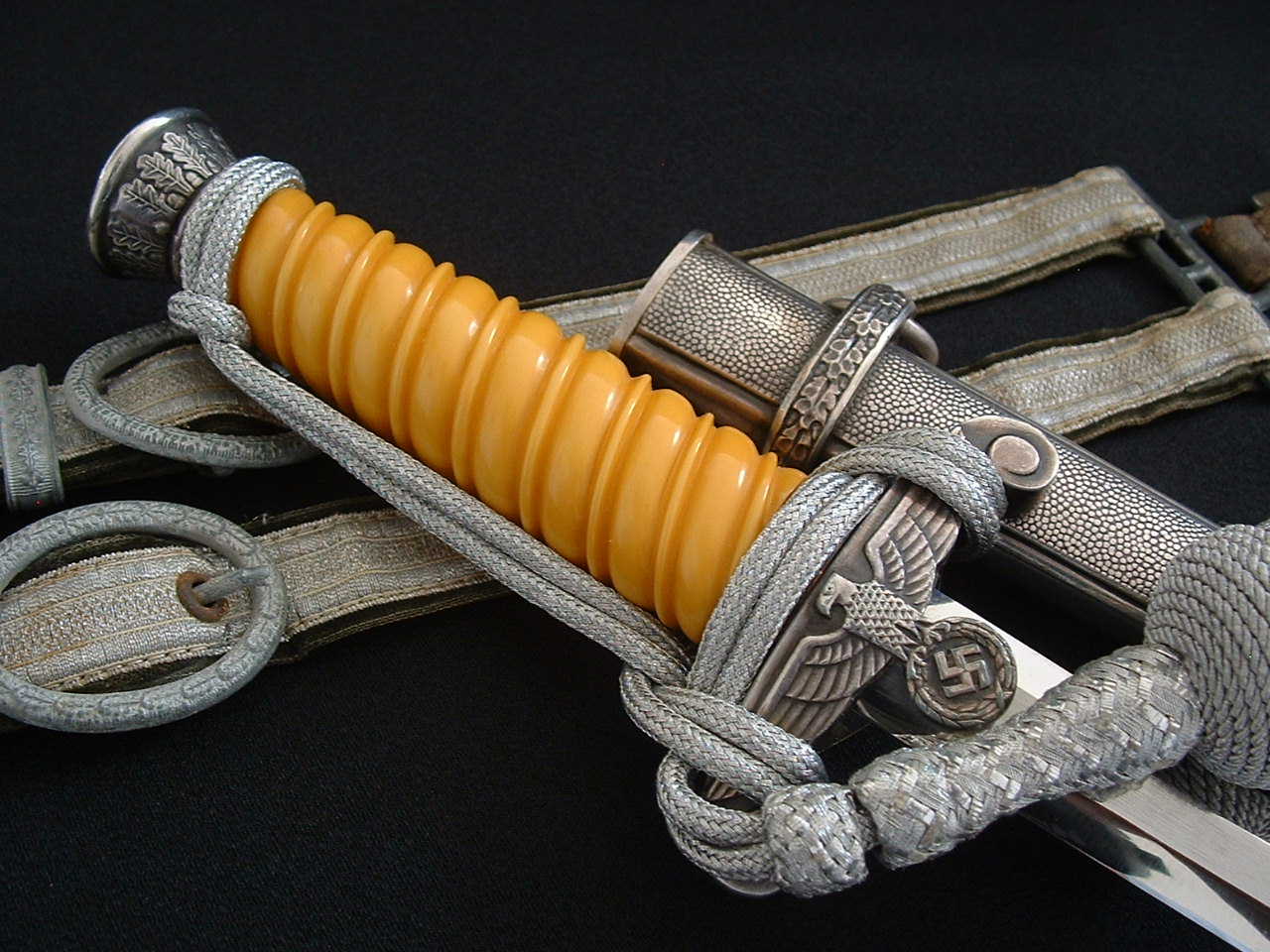
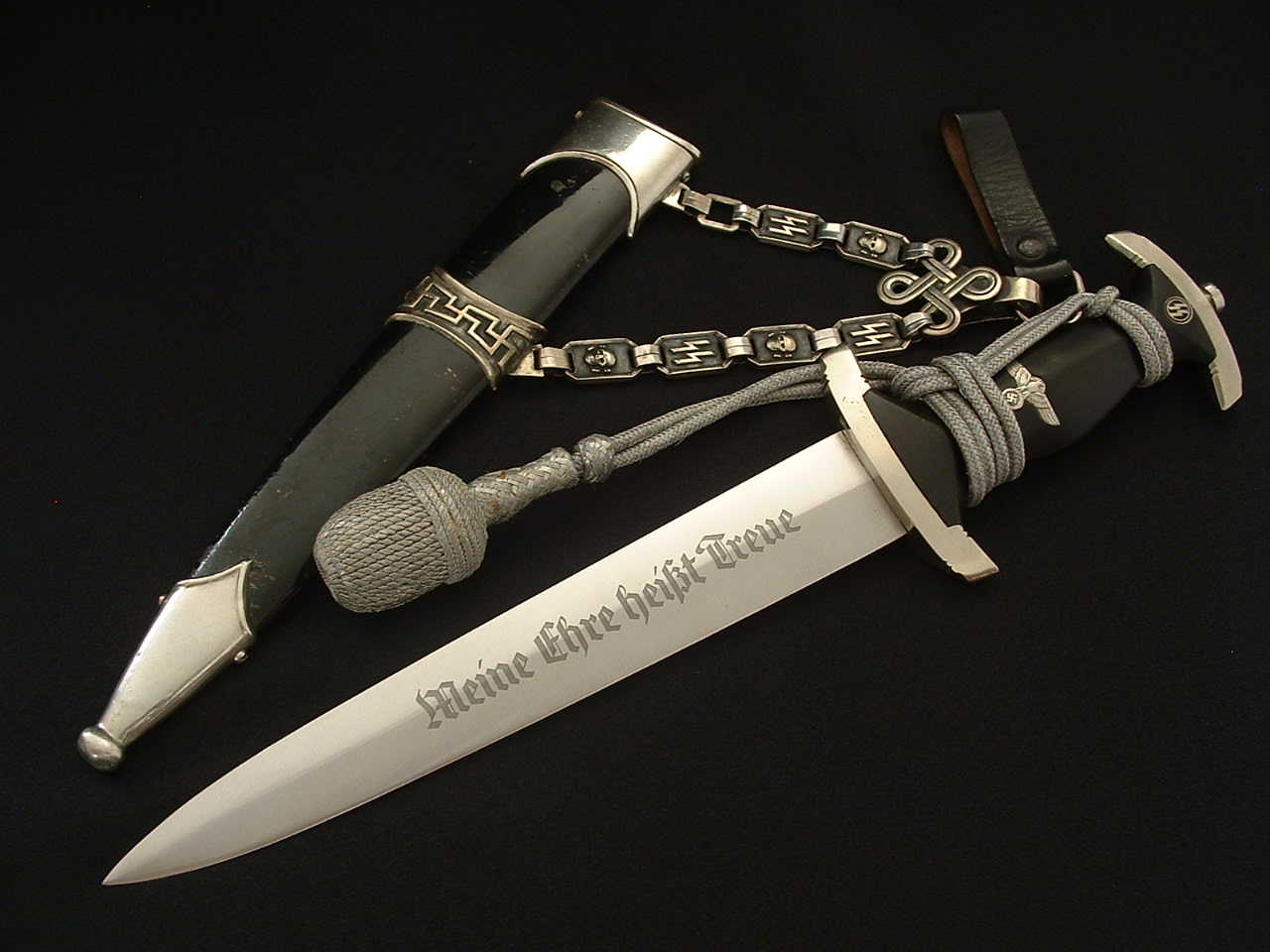
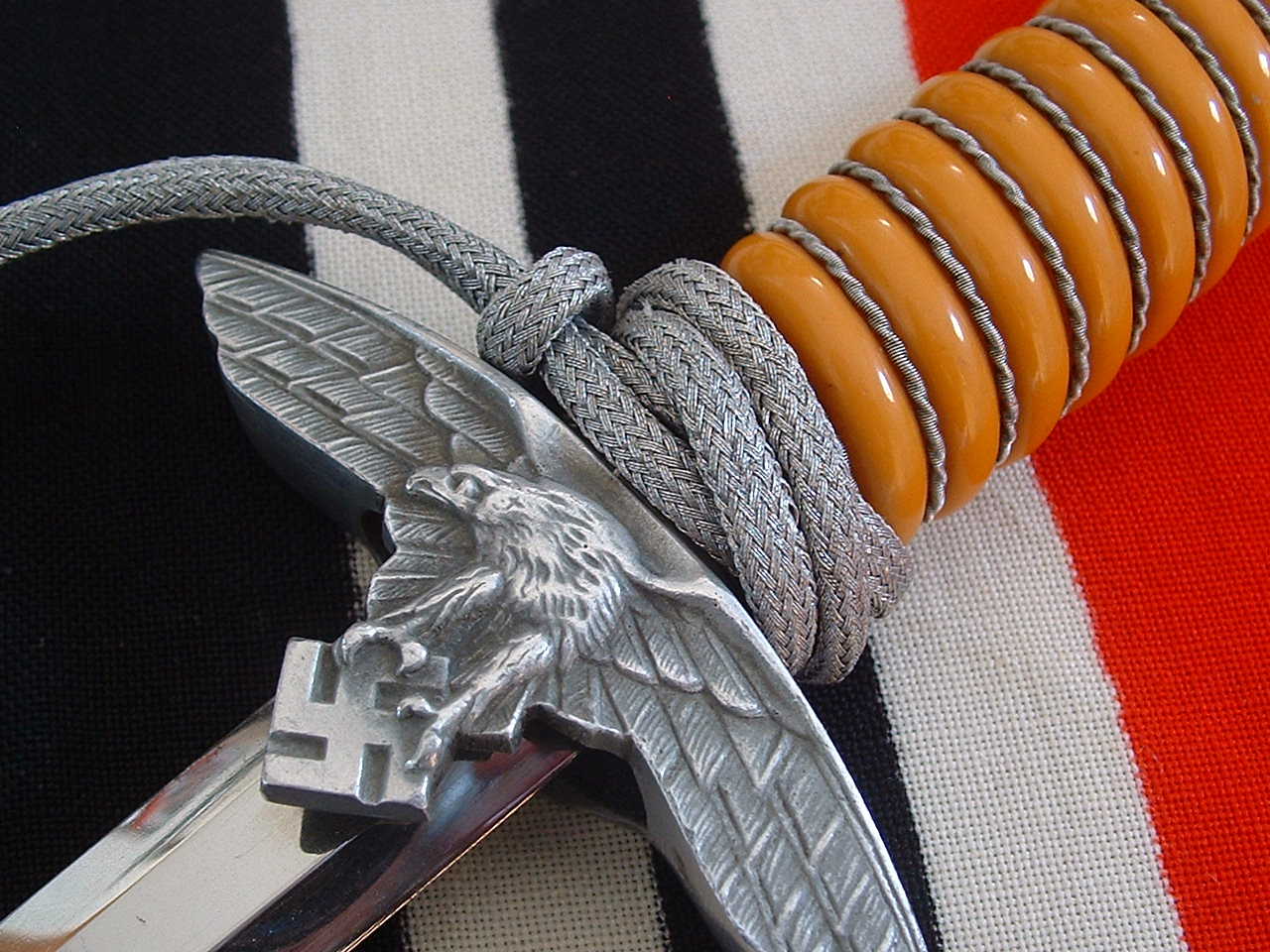
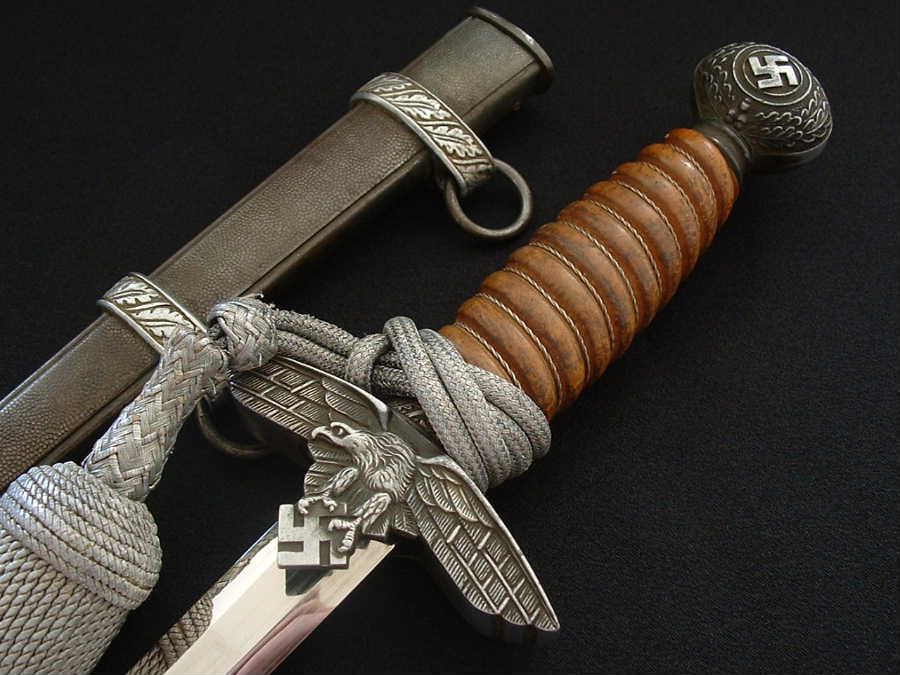
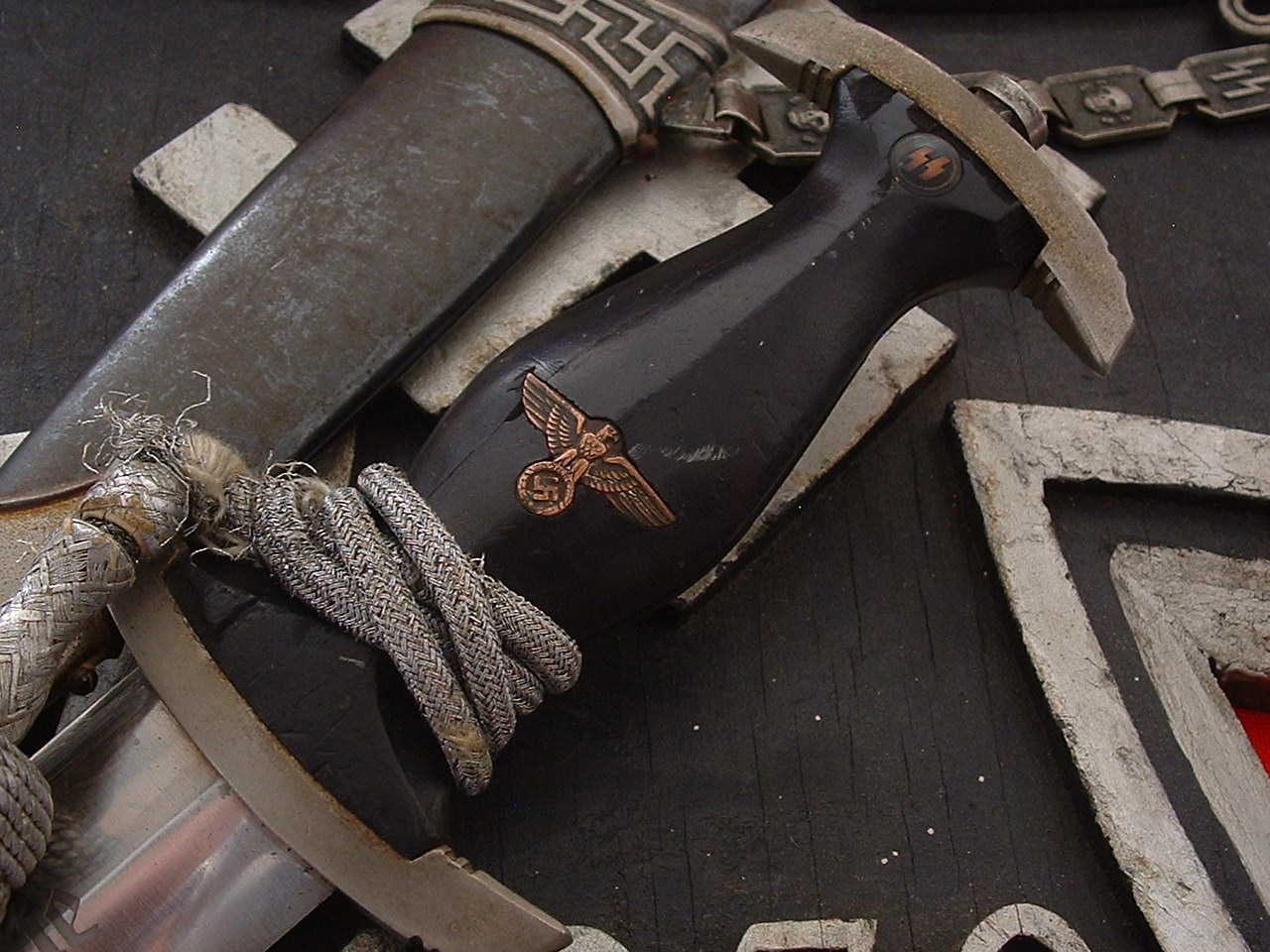
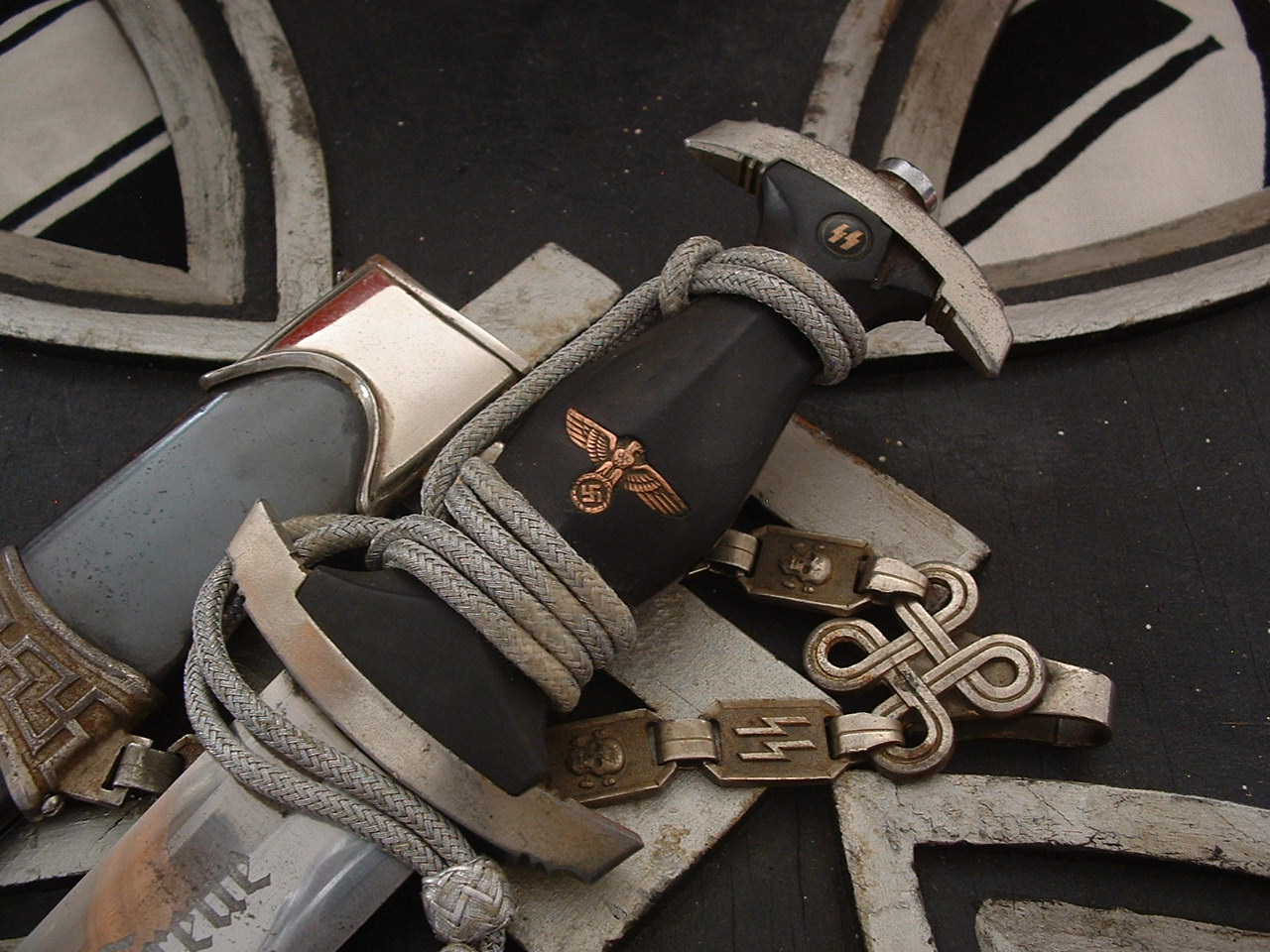
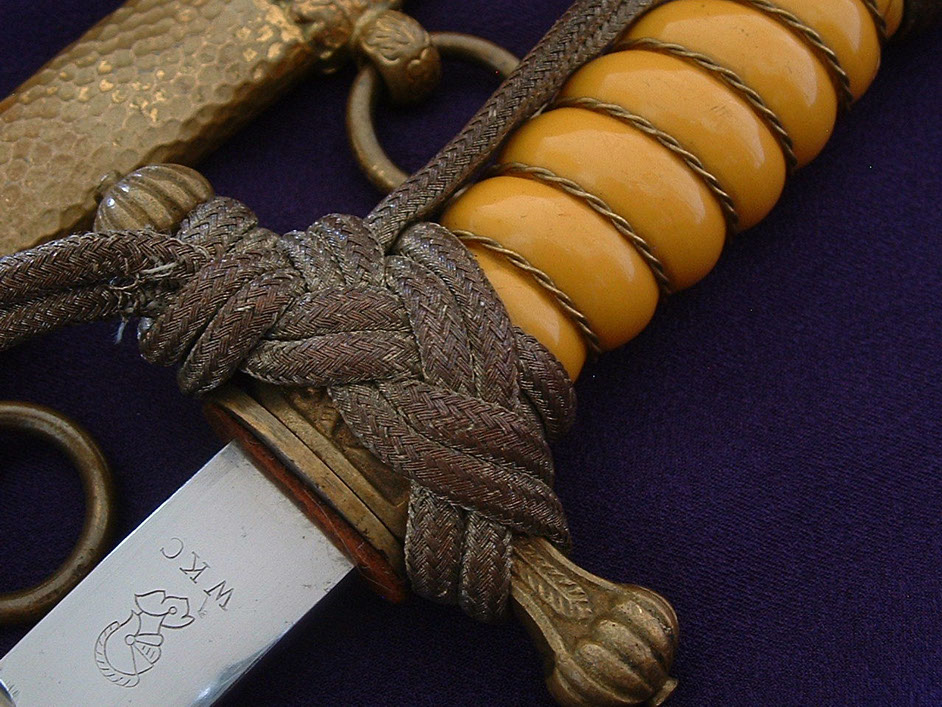
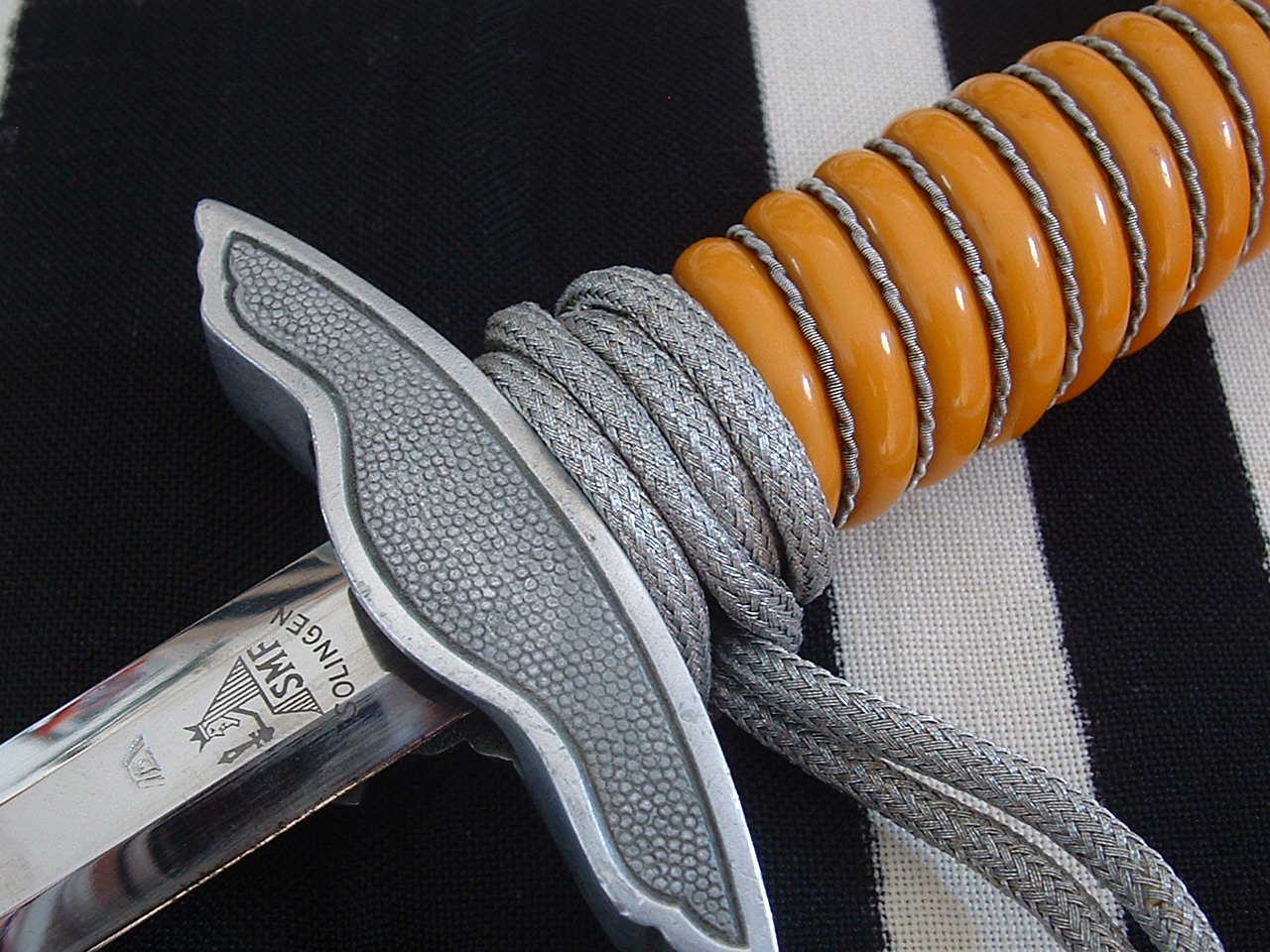
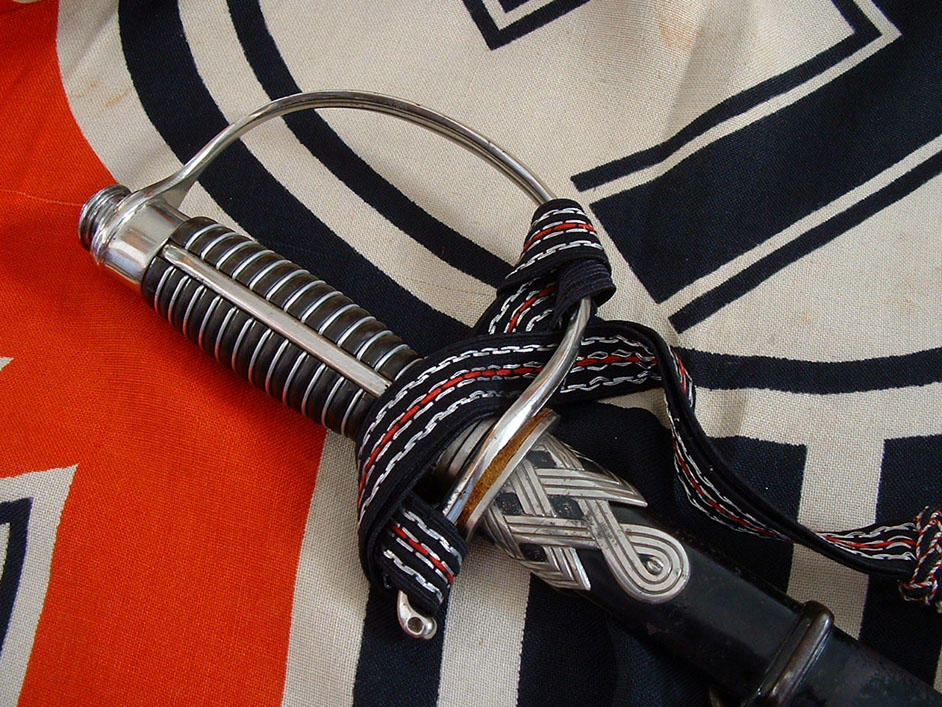
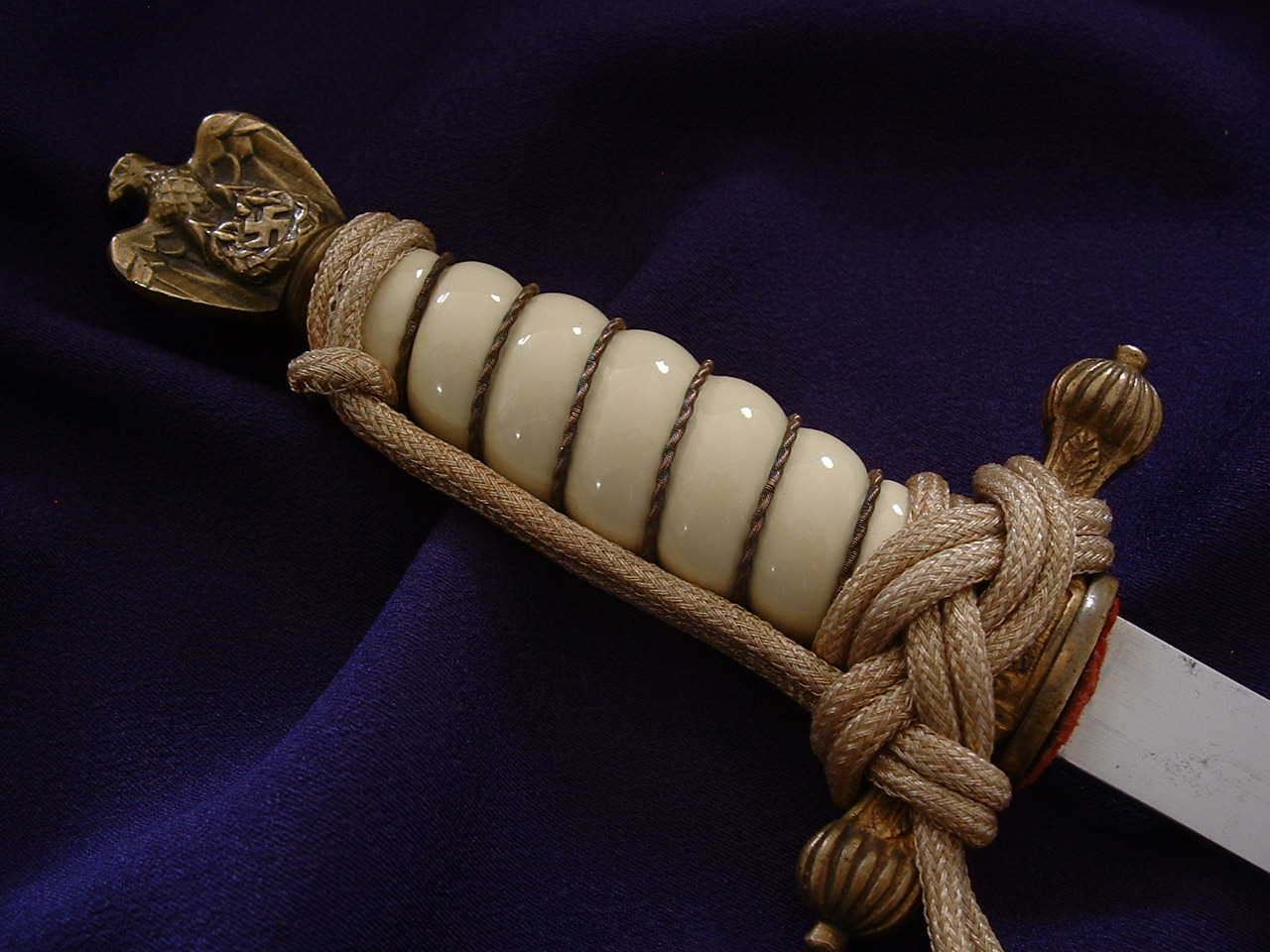
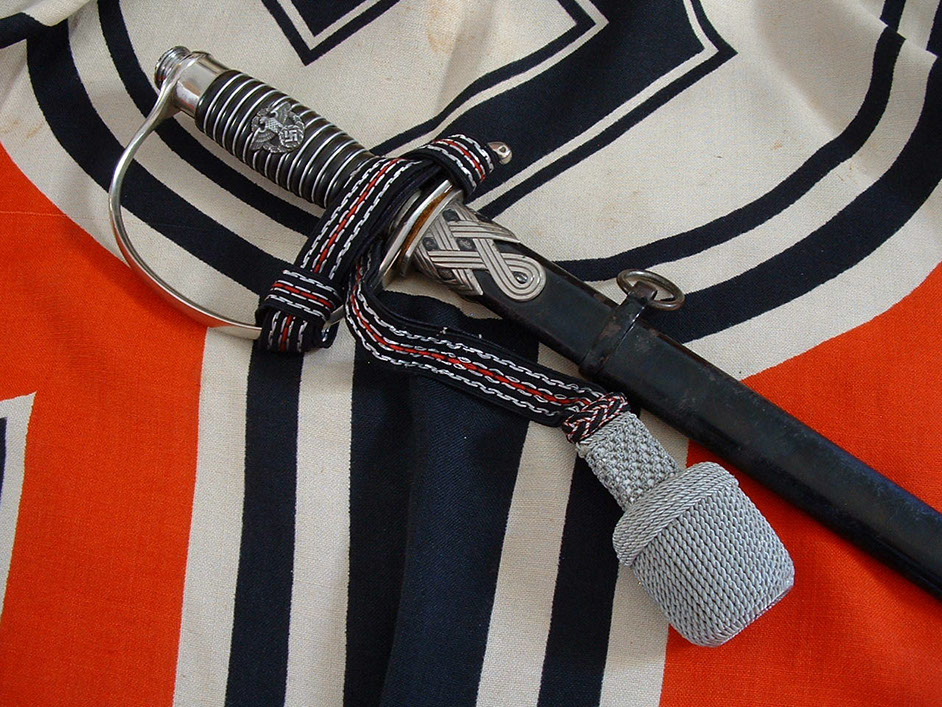

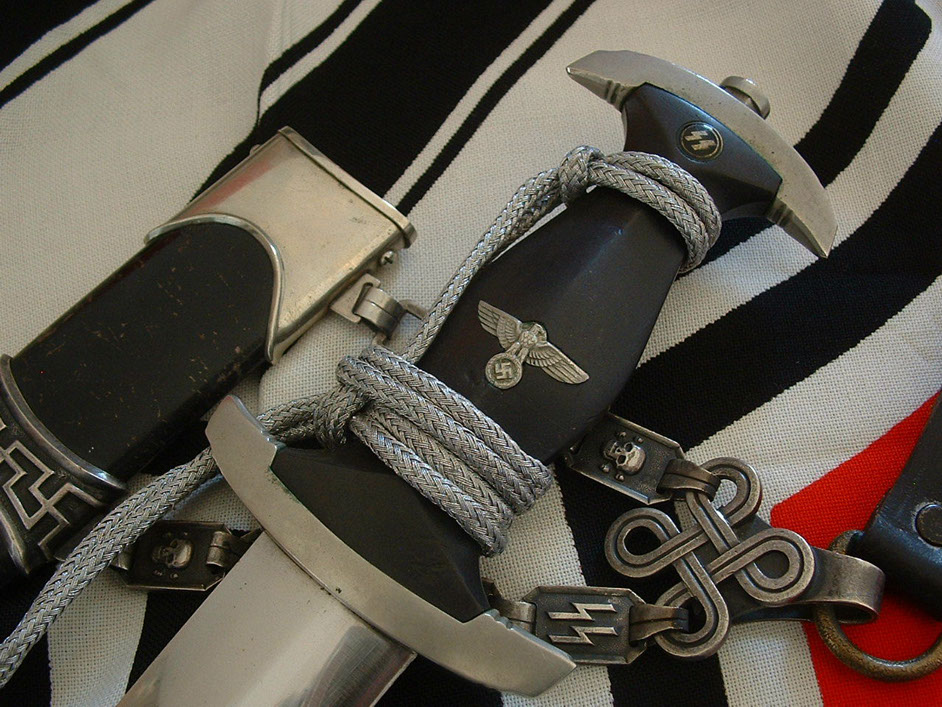

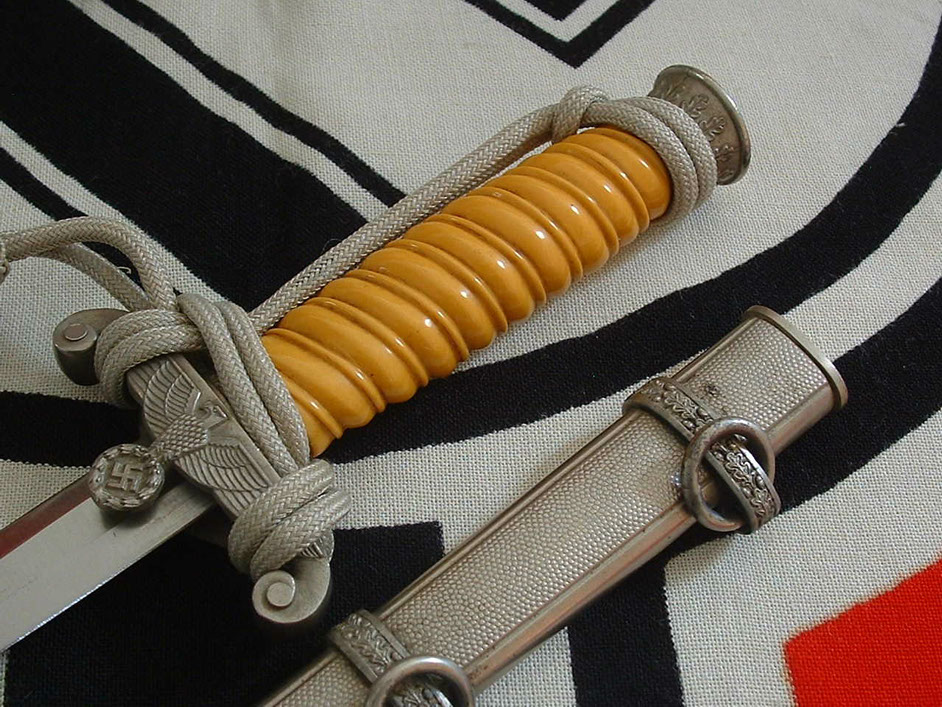
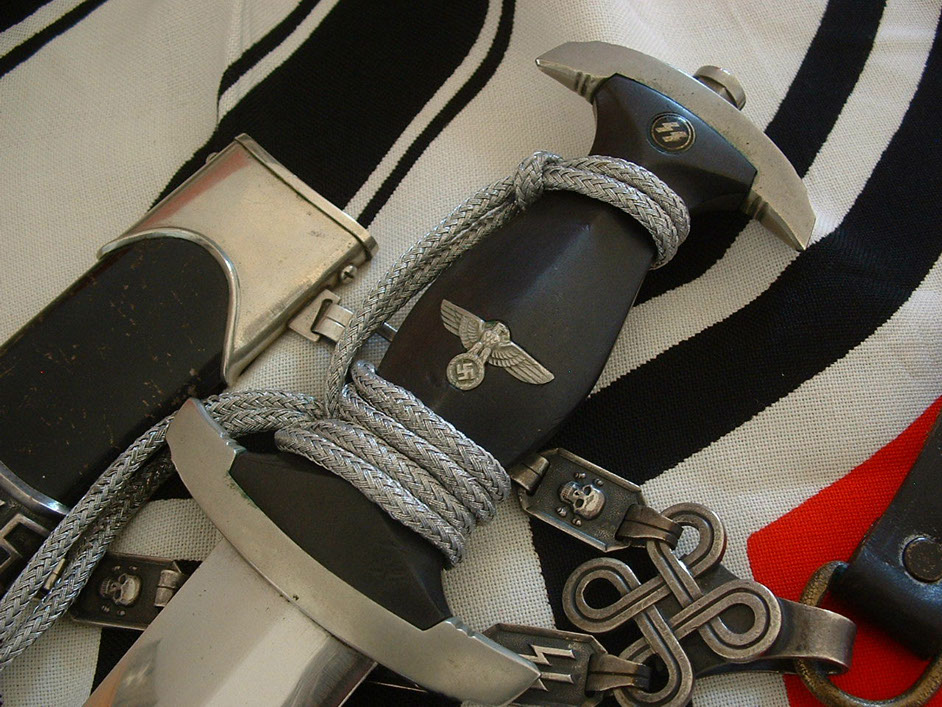

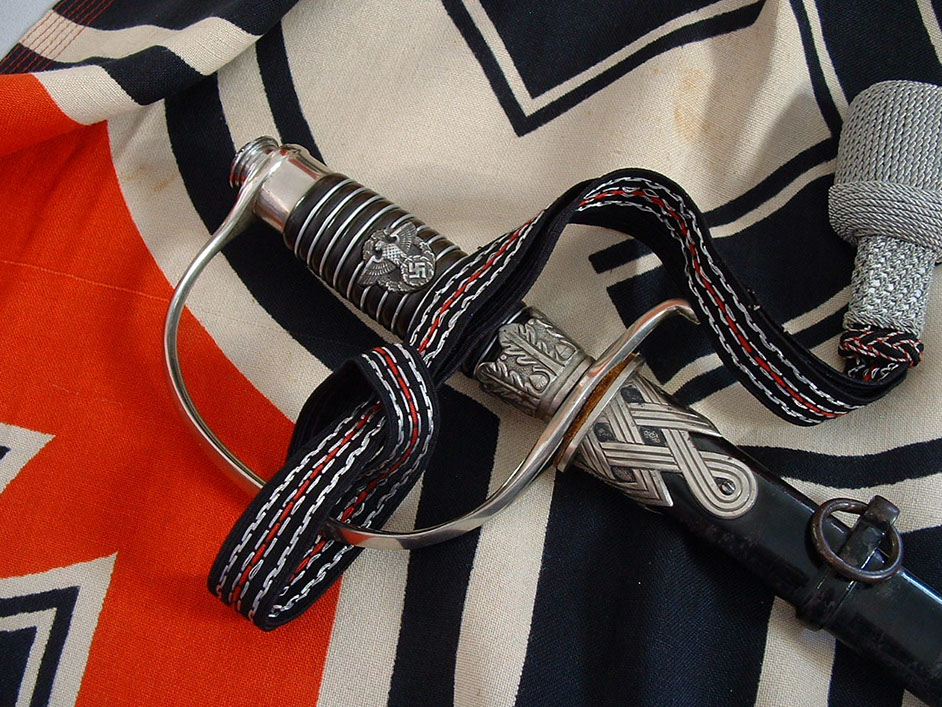
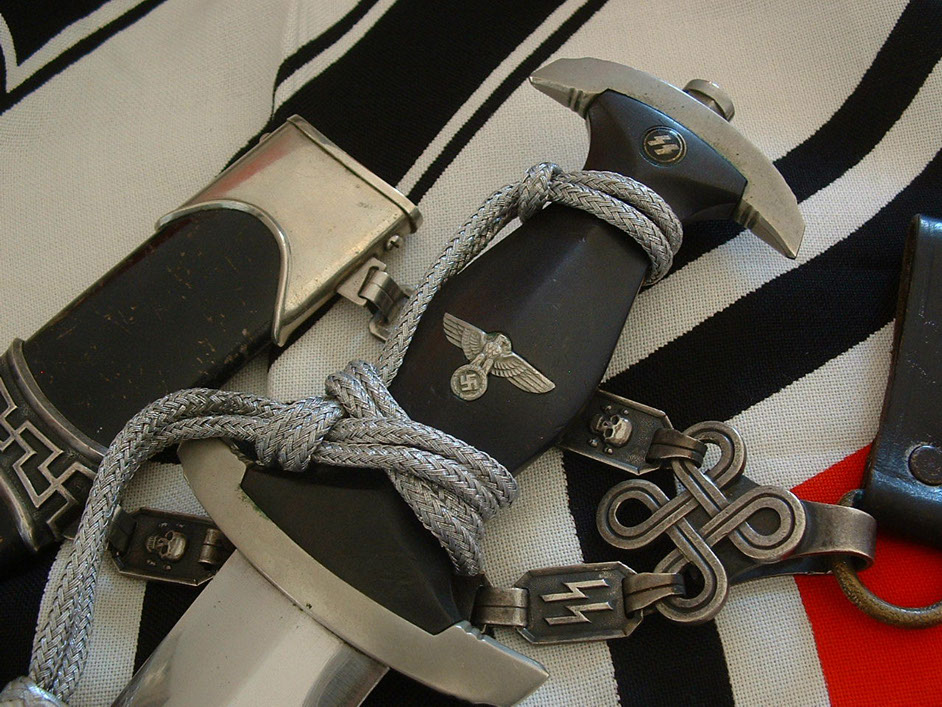


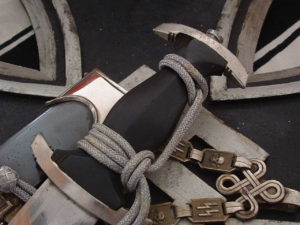
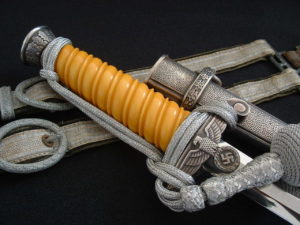
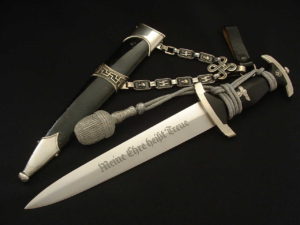
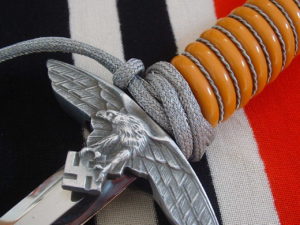
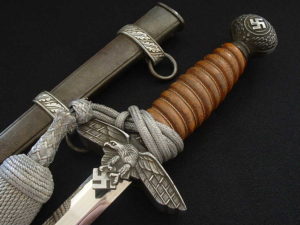
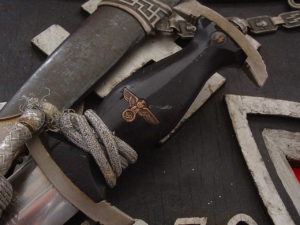
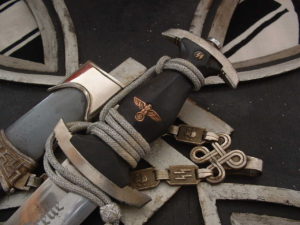


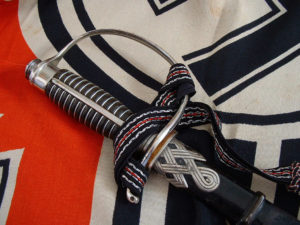
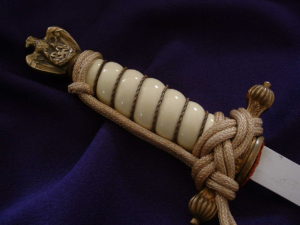
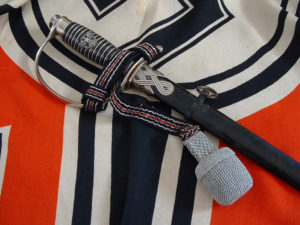
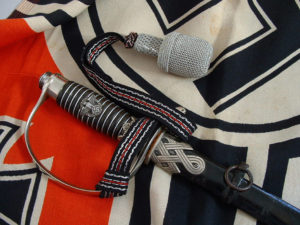
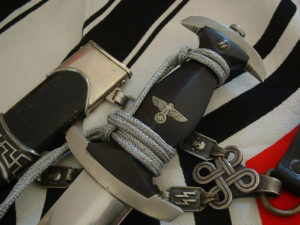
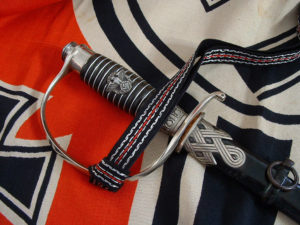
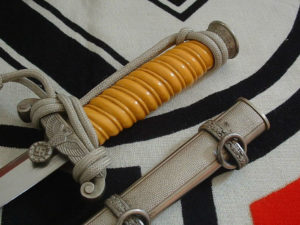

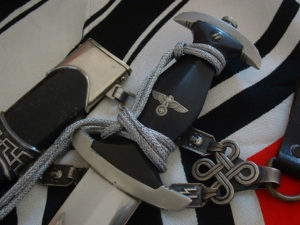
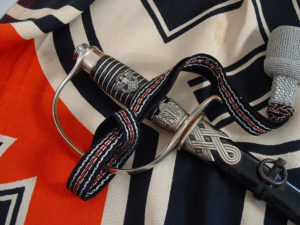
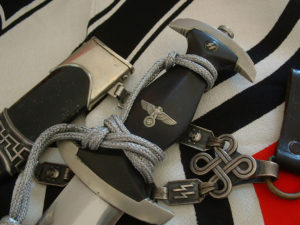

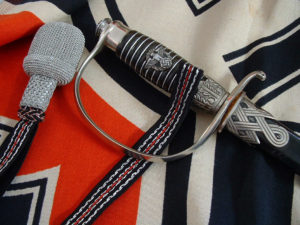
Portapees and Knots
3rd Reich Edged Weapon portapees and knots are a neat study by themselves. Many collectors have never stopped to think, ‘what the heck are those strange dingle ball items that hang off the grip assemblies that we see on several 3rd Reich daggers, and what were they for?” Well to answer the second part of the question, portappees first made their appearance during early European times, when wars were fought by armies of soldier vs soldier in a non-mechanized combat era. An important segment of any of these armies was their cavalry units, and this is where the portapee came to be very important to mounted on horseback. The portapee or sword knot was wrapped around the hilt of a sword with the strap and knot portion wrapped around the wrist of warrior’s fighting hand. If during the course of battle, a sword were to be knocked from the hand of a cavalry soldier fighting from the saddle , the portapee wrapped around the hilt of his weapon and his wrist allowed him to retain possession of it and all was not lost.
Now move ahead to the 3rd Reich Era. The portapees found on the daggers and swords of Hitlers Germany, were for the most part decorative accouterments. But we do find in some instances that they did signify something other than a decoration dangling from the hilt of a sword or dagger. Tommy Johnson in his 3rd Reich Edged Weapons reference series, shows the proper described the way that many common portapees were to be tied, but we also know from period photos and veteran purchased un-touched pieces, this practice was not always adhered to and followed. To me there is just something amiss when I see an Army, Navy or 2nd Model Luft dagger that doesn’t sport a portapee around it’s hilt assembly. It makes the dagger look naked to me, and therefore everyone on my own personal collection of Military Daggers, has some type of portappee tied around the grip. Lets touch on the basic ones, and then look at a few others that we see less often.
The Army Dagger. Whether you’ve been a collector for 20 years or just started last month, this is the 1st dagger that we usually encounter with a portappee tied on it. The Army Dagger Portapee tie is pretty straight forward and with few slight variations, is usually tied in the fashion that you see in these photos. The Army Portapee is usually 43 cm length, that can be found slightly shorter or longer and with varying thickness of the cord itself. As with the cord, the knot too can vary in length and diameter. When you tie these darn things, tie the top first, but then slide it to a position in the middle of the grip to give you the slack to complete the remainder of the wrap. Then slide that first section of the cord up to the pommel area of the dagger where it belongs. If you don’t do this, you find yourself trying to stretch and lace the larger knot portion through small openings of the cord. From what I understand, all Army Officer 3rd Reich Daggers were issued with a portapee to be worn with the dagger.
The Luftwaffe Daggers were worn with a portapee when the officer was attached to a “Flying Corp”. In other words, I take this to mean a Luftwaffe Pilot, Observer, Gunner or any other personal that was directly or indirectly attached to a flying group. The official Luftwaffe Dagger Portapee is described as being 23 cm and Tommy Johnson shows the proper wrap being tied in a crossing pattern over the hilt of the 1st model Luft daggers. If you have ever tried to wrap a portapee on a 1st model, you’ll notice that most of the time it will interfere with the dagger being properly set in the scabbard. (We see this same challenge later on with the SS M36 Dagger when the Waffen Officers were allowed to wear the Chained SS with a portappee. ) So at times we’ll see the shorter 23 cm Luft portapee wrapped in various ties when associated with the 1st model pattern daggers. Most of the time we don’t even see a portapee on these 1st models.
The 2nd Model Luft Dagger. As with the Army Officer’s dagger, the tie of a portapee around the hilt assembly of a 2nd model Luft, was spelled out in period literature found in Solingen after the war. The dagger hilt is wrapped in a simple crossing pattern that is just tied around the grip itself,and not like the Army Dagger that encompasses both grip and crossguard. When you tie a portapee on your 2nd model Luft, at times it’s easier to form the knot in your hand first and then slide it down over the grip. Because of the length of the cord being approximately 23 cm, it doesn’t afford a lot of slack to work with when trying to complete this tie.
The Navy Officers Dagger. Warning, if you decide to tie this knot, make sure that none of your family members, your dog, nor any of your friends are in the immediate vicinity when you attempt this challenge. Don’t drink too much coffee before you begin, and make sure your life insurance policy premiums are up to date. When you take a look at one of these clover leaf hitch knots, you have to marvel at the beautiful pattern of which they are tied in. I wish I could give you some tricks on this one, but having tied a few of them, I can tell you that they are a mother and be prepared to possibly loose your religion before you accomplish the feat. Most won’t even attempt to tie one of these, but I can give you one hint, although a 43 cm portapee is the proper length for a Navy Dagger, you have to get one that the cord is a little longer than the standard. Like the Army Dagger, once again you have to make your pommel tie in the middle of the grip first and then weave the remainder of the knot prior to slipping everything in to place. Good luck as you’re going to need it on this one.
I wanted to get the Military Dagger portapees described first and then I’ll touch on some of the political daggers and swords.
While we know that the use of a portapee with the M36 Chained SS Dagger wasn’t authorized until 1943, we do see many of these pieces with a variety of tied patterns about the grip of these daggers. Himmler, in a directive that came out on 15 February 1943, allowed commissioned officers of the Waffen SS and later the SD, to wear the SS Chain Dagger with the use of the 42cm portapee, the same knot used on that of the Army Officer Dagger. This is kind of a strange directive coming from the Reichsfuhrer during the late stages of WWII when Germany had all but lost the war, and when more pressing matters where no doubt of importance. Firstly, dagger production had all but ceased in 1942 as these dress ornament (any dagger) had been replace by a functional sidearm basically since the beginning of the war in 1939. And secondly, why would the Reichsfuhrer even be remotely concerned with such a trivial matter of a portapee worn with a Chained SS Dagger when everything was collapsing upon the Reich?? Who knows, as later on Himmler was concerned with the destruction of the Wewelsburg Castle where the Honor Rings of deceased SS Officers were stored, as if that were the most important final mission that the SS were to perform in May 1945! Go figure…………………
None the less, in early 1943 we know that there was an order issued by Himmler allowing Officers of the Waffen SS to wear the 42cm bullion portapee with the M36 Chain Dagger. Logic would dictate that we would only see late production chain daggers with a period wrapped portapee, but this is not the case as the collecting community has encountered many period early ones with them too. I’ve always believed that the portapee was uses prior to the 1943 Himmler issued authorization for the Waffen SS, on daggers carried by Allgemeine officers but who really knows ? The prescribed method of tie is shown in Tom’s book, being that of a crossed “X” pattern that is laced across the lower part of the grip and underneath of the crossguards. If you have ever tied one like this you will quickly notice that the wrapped portapee not only doesn’t stay tight and in place, but actually interferes with the dagger being placed flush into the scabbard. No doubt any SS officer that tied a 42cm portapee with their chain dagger also encountered this same problem, and hence we see many different varieties of period ties.
Two out of the three that I show here have been done during the 3rd Reich period, the 3rd is a configuration that we see often and is a favorite of mine that I tied myself. The 1st photo is the one that I tied, with the other 2 being done period by the SS Officer. You can tell a period tied portapee on a Chain Dagger usually by these 2 characteristics. The 1st is that the bullion portapee is frozen and encrusted in time where it has remained for the 60+ years, being very solidly firm and in place. The other indication of a period tied portapee is one that has left bullion silver residue engrained in the grip where it has laid for all of these years.